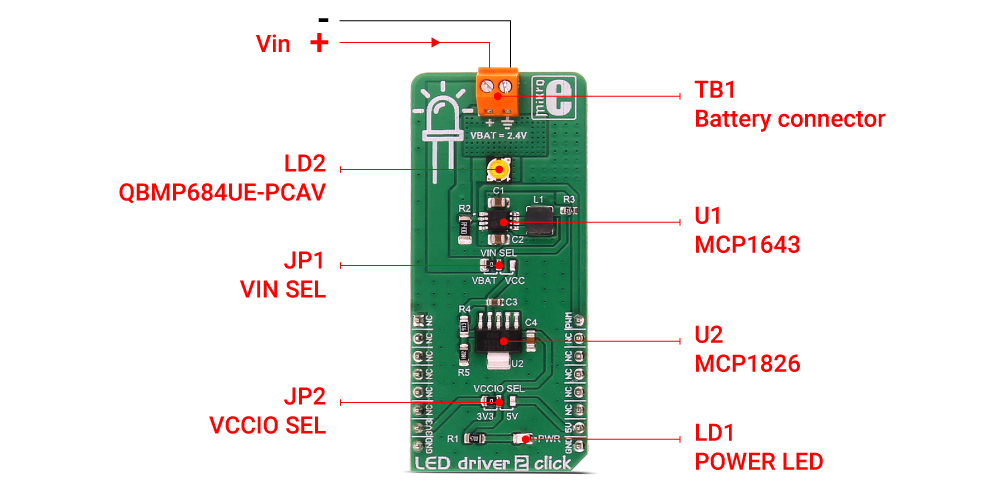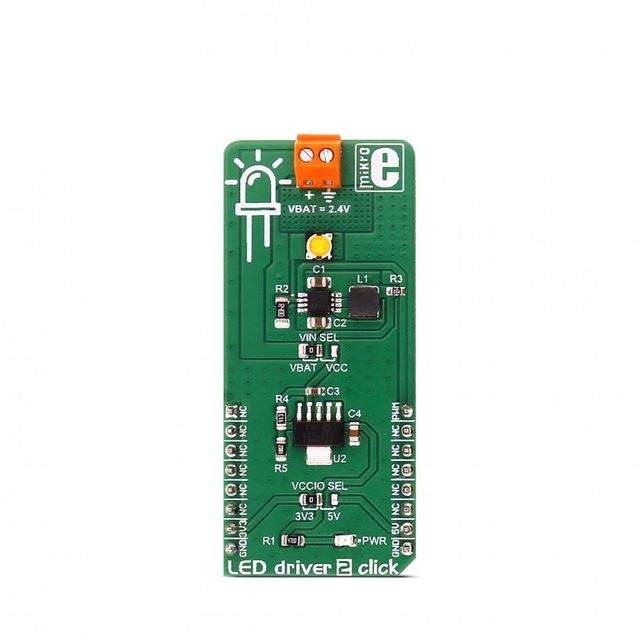- TRANSDUCERS
- TRANSDUCERS
- BASIC COMPONENTS DK
- BASIC COMPONENTS DK
- MARKETPLACE
- MARKETPLACE
- DEVELOPMENT BOARDS & KITS
- DEVELOPMENT BOARDS & KITS
- CABLE ASSEMBLIES
- CABLE ASSEMBLIES
- RF AND WIRELESS
- RF AND WIRELESS
- BOXES ENCLOSURES RACKS
- BOXES ENCLOSURES RACKS
- AUDIO PRODUCTS
- AUDIO PRODUCTS
- FANS-BLOWERS-THERMAL MANAGEMENT
- FANS-BLOWERS-THERMAL MANAGEMENT
- WIRELESS MODULES
- WIRELESS MODULES
- TERMINALS
- TERMINALS
- Cables/Wires
- Cables/Wires
- SINGLE BOARD COMPUTER
- SINGLE BOARD COMPUTER
- BREAKOUT BOARDS
- BREAKOUT BOARDS
- LED
- LED
- TEST AND MEASUREMENT
- TEST AND MEASUREMENT
- DEVELOPMENT BOARDS AND IC's
- DEVELOPMENT BOARDS AND IC's
- EMBEDDED COMPUTERS
- EMBEDDED COMPUTERS
- OPTOELECTRONICS
- OPTOELECTRONICS
- INDUSTRAL AUTOMATION AND CONTROL
- INDUSTRAL AUTOMATION AND CONTROL
- COMPUTER EQUIPMENT
- COMPUTER EQUIPMENT
- CONNECTORS & INTERCONNECTS
- CONNECTORS & INTERCONNECTS
- MAKER/DIY EDUCATIONAL
- MAKER/DIY EDUCATIONAL
- TOOLS
- TOOLS
- MOTORS/ACTUATORS/SOLEENOIDS/DRIVERS
- MOTORS/ACTUATORS/SOLEENOIDS/DRIVERS
- FPGA HARDWARE
- FPGA HARDWARE
- ROBOTICS & AUTOMATION
- ROBOTICS & AUTOMATION
Description
LED driver 2 click carries the MCP1643 - LED constant current regulator, made by Microchip. It is a compact, high-efficiency, fixed frequency, synchronous step-up converter, optimized to drive one LED with the constant current. It can be powered by a two-cell alkaline/NiMH/NiCd battery (2.4V), or via the mikroBUS™ power supply pins. LED Driver 2 click also features 3W High brightness LED by QT-Brightek. This LED can be dimmed by applying the variable duty cycle PWM signal to the EN pin of the MCP1643 regulator, through the PWM pin of the mikroBUS™.
Thanks to its relatively high constant current driving capability and the overvoltage protection on the output, this integrated circuit is perfectly suited for high brightness/power LED applications: portable LED lighting products, LED Flashlight and Head Lamps, Rechargeable Flashlights, General LED constant current applications and so on.
How does it work?
MCP1643 is basically a boost regulator with a low voltage reference of 120mV (VFB). The main feature of the regulator is that it is optimized to keep the current running through the LED - constant, by regulating the voltage across the feedback resistor. The VFB pin is used to regulate the voltage across the feedback resistor to 120 mV, keeping the output LED current regulated. As feedback resistor (R2 on the provided schematic) is connected to the FB pin and its resistance is 0.4Ω, the maximum current through the LED can easily be calculated by using the following formula: ILED = VFB/R2 = 120mV/0.4Ω = 300mA.
The voltage drop on the feedback resistor has to be low, in order to avoid dissipation. In the case of MCP1643, this voltage is set to 120mV which ensures no dissipation issues at all.
The onboard VIN SEL SMD jumper offers the selection of the input voltage source: it can be set to use a two-cell NiMH battery connected to VIN terminal (2.4V), or the power supply pin from the mikroBUS™. The voltage from the mikroBUS™ can be set with the VCCIO SMD jumper to either 5V or 3.3V. Since the forward voltage on the high power LED is 3.2V, the click board comes equipped with the MCP1826, an LDO regulator by Microchip, which is used to drop the selected mikroBUS™ voltage down to around 2.4V so that the MPC1643 input voltage requirements are met.
High brightness 3W LED is already attached to the output of the MCP1643 and it comes soldered on the board, so the circuit is ready to be used right away.
The LED brightness can be regulated by applying a variable duty cycle PWM signal to the EN pin of the MCP1643 regulator (routed to PWM pin on the mikroBUS™). This results in changing the current running through the LED in a linear fashion, from 0 to the value set by the resistor, depending on the PWM cycle.
The device also features an output overvoltage protection that limits the output voltage to 5.0V typical, in case the LED fails or output load is disconnected. Also, the device features a thermal shutdown at +150°C with a hysteresis of +25°C and the overcurrent protection that prevents failures due to short circuits on the output.
TT-MK-MIKROE-2807- Home
- LED driver 2 click
LED driver 2 click
SIZE GUIDE
- Shipping in 10-12 Working days
- http://cdn.storehippo.com/s/59c9e4669bd3e7c70c5f5e6c/ms.products/5a1cf2dd2e8cc4c57ac8e836/images/5a1cf2dd2e8cc4c57ac8e837/5a1cf2d75931f7d57ac50782/5a1cf2d75931f7d57ac50782.jpg
Description of product
Description
LED driver 2 click carries the MCP1643 - LED constant current regulator, made by Microchip. It is a compact, high-efficiency, fixed frequency, synchronous step-up converter, optimized to drive one LED with the constant current. It can be powered by a two-cell alkaline/NiMH/NiCd battery (2.4V), or via the mikroBUS™ power supply pins. LED Driver 2 click also features 3W High brightness LED by QT-Brightek. This LED can be dimmed by applying the variable duty cycle PWM signal to the EN pin of the MCP1643 regulator, through the PWM pin of the mikroBUS™.
Thanks to its relatively high constant current driving capability and the overvoltage protection on the output, this integrated circuit is perfectly suited for high brightness/power LED applications: portable LED lighting products, LED Flashlight and Head Lamps, Rechargeable Flashlights, General LED constant current applications and so on.
How does it work?
MCP1643 is basically a boost regulator with a low voltage reference of 120mV (VFB). The main feature of the regulator is that it is optimized to keep the current running through the LED - constant, by regulating the voltage across the feedback resistor. The VFB pin is used to regulate the voltage across the feedback resistor to 120 mV, keeping the output LED current regulated. As feedback resistor (R2 on the provided schematic) is connected to the FB pin and its resistance is 0.4Ω, the maximum current through the LED can easily be calculated by using the following formula: ILED = VFB/R2 = 120mV/0.4Ω = 300mA.
The voltage drop on the feedback resistor has to be low, in order to avoid dissipation. In the case of MCP1643, this voltage is set to 120mV which ensures no dissipation issues at all.
The onboard VIN SEL SMD jumper offers the selection of the input voltage source: it can be set to use a two-cell NiMH battery connected to VIN terminal (2.4V), or the power supply pin from the mikroBUS™. The voltage from the mikroBUS™ can be set with the VCCIO SMD jumper to either 5V or 3.3V. Since the forward voltage on the high power LED is 3.2V, the click board comes equipped with the MCP1826, an LDO regulator by Microchip, which is used to drop the selected mikroBUS™ voltage down to around 2.4V so that the MPC1643 input voltage requirements are met.
High brightness 3W LED is already attached to the output of the MCP1643 and it comes soldered on the board, so the circuit is ready to be used right away.
The LED brightness can be regulated by applying a variable duty cycle PWM signal to the EN pin of the MCP1643 regulator (routed to PWM pin on the mikroBUS™). This results in changing the current running through the LED in a linear fashion, from 0 to the value set by the resistor, depending on the PWM cycle.
The device also features an output overvoltage protection that limits the output voltage to 5.0V typical, in case the LED fails or output load is disconnected. Also, the device features a thermal shutdown at +150°C with a hysteresis of +25°C and the overcurrent protection that prevents failures due to short circuits on the output.
NEWSLETTER
Subscribe to get Email Updates!
Thanks for subscribe.
Your response has been recorded.
INFORMATION
ACCOUNT
ADDRESS
Tenet Technetronics# 2514/U, 7th 'A' Main Road, Opp. to BBMP Swimming Pool, Hampinagar, Vijayanagar 2nd Stage.
Bangalore
Karnataka - 560104
IN
Tenet Technetronics focuses on “Simplifying Technology for Life” and has been striving to deliver the same from the day of its inception since 2007. Founded by young set of graduates with guidance from ardent professionals and academicians the company focuses on delivering high quality products to its customers at the right cost considering the support and lifelong engagement with customers. “We don’t believe in a sell and forget model “and concentrate and building relationships with customers that accelerates, enhances as well as provides excellence in their next exciting project.


